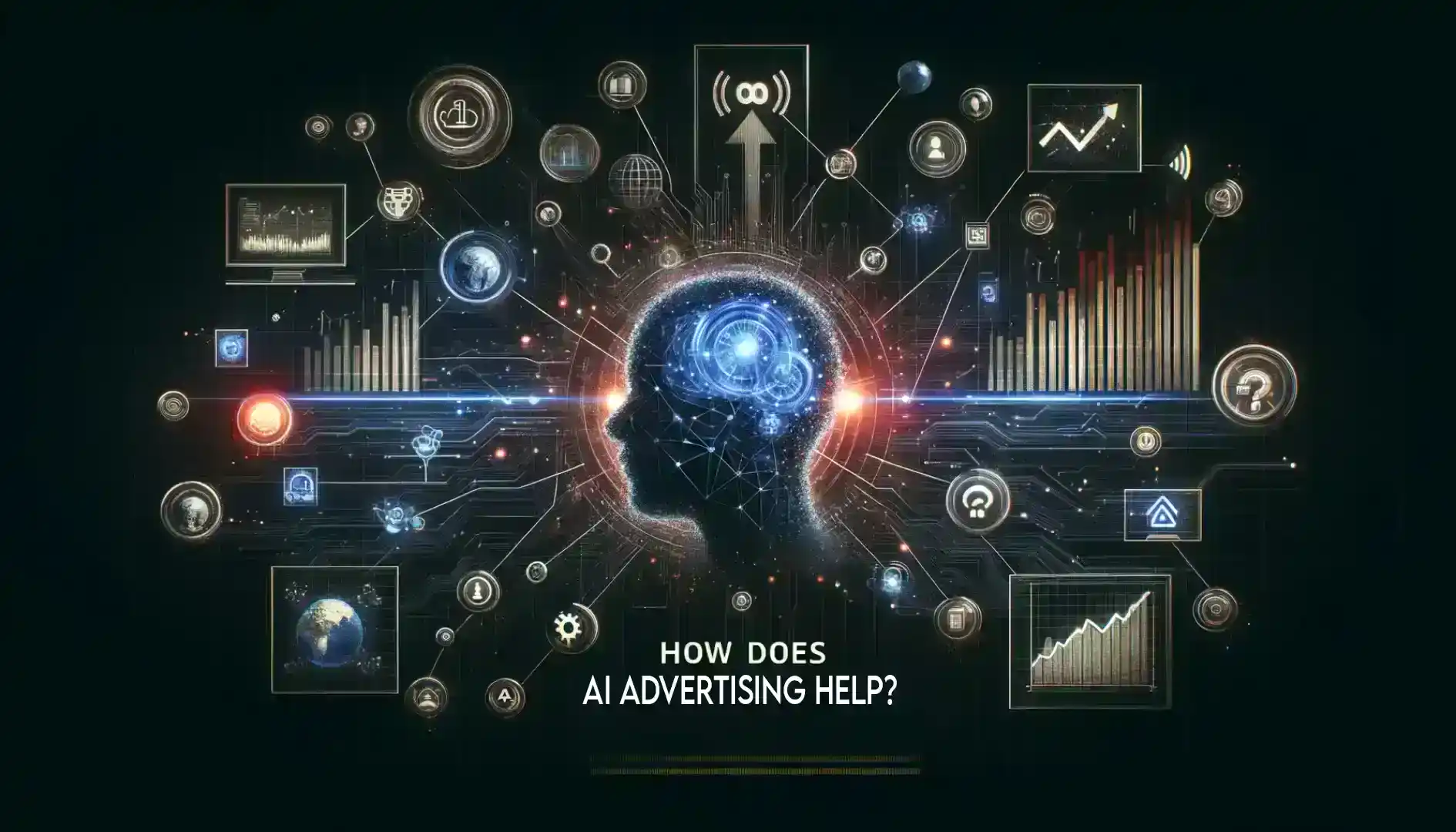Table of Contents
In the world of advertising, the utilization of Artificial Intelligence (AI) has transformed the way businesses connect with their target audience. AI advertising empowers companies to harness the power of data-driven campaigns, ensuring higher efficiency, precision, and effectiveness in their marketing efforts.
This article explores ten key ways AI is reshaping the advertising landscape.
One of the remarkable aspects of AI advertising is its ability to facilitate hyper-personalization. Unlike traditional methods that might involve simple personalization, AI goes a step further. It harnesses the wealth of customer data available to comprehend individual preferences, habits, and even emotions through sentiment analytics. This deeper understanding allows for the creation of highly targeted ad campaigns that resonate with each unique audience member.
Moreover, AI advertising introduces real-time adaptability to marketing campaigns, a significant departure from traditional approaches with fixed content. AI-driven systems can swiftly respond to consumer feedback and ever-changing market dynamics. This agility ensures that ad creatives remain fresh, relevant, and engaging, contributing to improved campaign performance.
The Foundation Of AI Advertising

At the core of AI advertising lies a wealth of data. AI analyzes user’s digital footprints, including online activities, social media interactions, and e-commerce behaviors. This results in precise customer profiles, revealing not just preferences but also the perfect timing and manner of presentation for maximum impact.
The sheer volume of data generated daily fuels AI advertising’s effectiveness. Marketers utilize advanced AI algorithms to sift through this data goldmine, identifying patterns, habits, and trends. This fine-grained data enables advertisers to create a comprehensive understanding of their target audiences, laying the foundation for the popularity of AI advertising.
The foundation of AI advertising is rooted in the vast reservoir of data it relies upon. AI meticulously scrutinizes users’ digital footprints, encompassing their online engagements, interactions on social media platforms, and e-commerce behaviors. The outcome is the creation of precise customer profiles that divulge not only their preferences but also the optimal timing and presentation style for maximum impact.
The sheer magnitude of data generated daily serves as the lifeblood of AI advertising’s effectiveness. Marketers harness the power of advanced AI algorithms to navigate this data treasure trove, deciphering intricate patterns, consumer habits, and emerging trends. This granular data empowers advertisers to construct a comprehensive and nuanced understanding of their target audiences, forming the bedrock upon which the prominence of AI advertising rests.
Key Ways of AI Advertising
Hyper-Personalization
AI algorithms analyze vast amounts of customer data to create highly personalized advertisements. By understanding individual preferences and behaviors, AI helps tailor ad content to specific audiences, resulting in more engaging and relevant campaigns.
Many platforms and brands utilize AI to boost advertising performance. Hulu, an over-the-top (OTT) platform, has been leveraging AI-driven algorithms since 2017, to analyze viewer data and deliver tailored ads based on demographics and preferences, which significantly has increased viewer engagement and time spent per subscriber.
Predictive Analytics
AI can predict future consumer behavior based on historical data. Advertisers can use this insight to anticipate trends, optimize ad placements, and allocate budgets more effectively, ultimately improving ROI.
Dynamic Ad Creation
With AI, advertisers can create dynamic ads that adapt in real time. For example, e-commerce sites can display products relevant to a user’s recent browsing history, increasing the likelihood of conversion. Or you can utilize an AI ads maker on social media platforms to automatically generate personalized advertisements tailored to each user’s interests and behaviors, maximizing engagement and ROI.
Audience Segmentation
AI-powered audience segmentation divides consumers into distinct groups based on their characteristics and behaviors. Advertisers can then target these segments with tailored campaigns, enhancing the efficiency of their ad spend.
Chatbots and Conversational Advertising
Chatbots powered by AI facilitate real-time interactions with customers. They can answer queries, provide recommendations, and even complete transactions, creating a seamless advertising experience.
Ad Content Optimization
Additionally, Integration with ad verification proxies adds an extra layer of assurance. By incorporating real-time feedback from these proxies into the optimization process, AI algorithms can not only enhance performance but also ensure that the reported metrics accurately reflect genuine user interactions.
Fraud Detection
AI can identify and prevent ad fraud, ensuring that marketing budgets are not wasted on fake clicks or impressions. This leads to more transparent and cost-effective campaigns.
Voice Search Optimization
With the rise of voice-activated devices, AI helps advertisers optimize content for voice search queries, opening up new avenues for reaching consumers.
Cross-Channel Integration
AI advertising platforms enable seamless integration across various advertising channels, ensuring a consistent message and brand presence across the web, social media, and other platforms. This approach can be particularly beneficial for businesses looking to improve their B2B digital advertising efforts by creating cohesive and targeted campaigns that resonate across multiple touchpoints.
Augmented Reality (AR) and Virtual Reality (VR)
AI-powered AR and VR experiences are revolutionizing advertising. Brands can create immersive ad campaigns that engage users in entirely new ways, enhancing brand awareness and customer engagement.
How Does AI Advertising Help?

The use of AI in advertising has several critical functions that help in creating customized and data-driven campaigns. We’ve highlighted some of the main functions of AI in advertising and how they help below.
Personalization
AI enables hyper-personalization by analyzing customer data, and understanding preferences, habits, and even emotions. This results in highly targeted ad campaigns tailored to individual tastes.
AI advertising excels in hyper-personalization. Unlike simple personalization like using a user’s first name, AI goes further. It analyzes customer data, including preferences and emotions through sentiment analytics, enabling highly targeted ad campaigns.
For example, a user, let’s call them Tuco, prefers minimalist fashion and shops for such clothing online. AI algorithms study Tuco’s likes and dislikes to deliver customized ads featuring simple and elegant clothes that match Tuco’s style. This level of personalization is replacing generic ads and enhancing the customer experience.
Real-time Adaptability
Unlike traditional campaigns, AI allows real-time adjustments based on consumer feedback and market trends. This ensures that ads remain fresh, relevant, and engaging.
AI brings real-time adaptability to advertising, a significant departure from traditional campaigns with fixed content. With AI, ads can respond instantly to consumer feedback and market trends.
For instance, imagine a retail brand promoting its latest products. AI can optimize ad creatives to highlight trending products or use popular social media dialogue to enhance effectiveness. This flexibility is crucial in the ever-changing digital advertising landscape, ensuring campaigns stay fresh, relevant, and engaging.
Predictive Analytics
Predictive analytics is another pivotal function of AI in advertising. It enables marketers to anticipate user interactions with their ads, moving beyond mere product recommendations based on past purchases. AI systems can predict future consumer behavior, providing insights that empower marketers to fine-tune their ad campaigns proactively. This foresight helps in optimizing ad placements, allocation of budgets, and ultimately enhancing return on investment (ROI).
AI employs predictive analytics to anticipate user actions and enhance ad campaigns. Instead of solely relying on past purchases for recommendations, AI predicts user interactions.
For instance, if a user has shown interest in home workout equipment while browsing fitness gear, AI can predict their interest in athleisure clothing. This proactive approach ensures that ads remain relevant and engage users effectively, giving marketers a competitive edge.
Automation
AI streamlines automation, reducing the time marketers spend on tedious tasks. This allows marketers to focus on strategic and creative aspects while AI handles tasks like ad placements and bid adjustments. Automated image analysis is yet another area where AI has made significant inroads. AI algorithms are now capable of accurately interpreting complex medical images such as X-rays, MRIs, and CT scans. This technology not only expedites the diagnostic process but also enhances accuracy, reducing the chances of human error.
Consider the manual effort required for a digital advertising campaign. AI, on the other hand, efficiently processes and interprets data, outperforming human marketers in speed and precision. This not only saves time but also enhances campaign effectiveness through real-time informed decision-making.
Applications and Future

AI advertising is already being embraced by industries ranging from e-commerce and finance to healthcare and entertainment. As AI continues to advance, we can expect even more innovative applications. Virtual influencers, 3D product visualizations, and AI-generated content are just a glimpse of what the future holds.
In the future, AI advertising will analyze your needs and the context behind them, creating a new frontier known as AI Advertising 2.0. This frontier includes augmented reality (AR) experiences, voice-activated ads, and more.
Imagine AI understanding your desires and the situation you’re in. Whether you’re planning a beach trip or a mountain hike, your voice-activated AI assistant can suggest relevant ads, like tactical gear or sunscreen. The fusion of customer data and AI opens up endless possibilities.
We’re excited about the future of AI advertising, expecting even more interactive and immersive experiences, allowing marketers to engage with consumers as naturally as real-world conversations.
Conclusion
The impact of AI on advertising is undeniable. It empowers advertisers to connect with their audience in previously unimaginable ways. From hyper-personalization to immersive AR experiences, AI advertising is reshaping the industry. Embracing these technologies is not just a trend but a necessity for businesses looking to stay competitive in the digital age.
As AI continues to evolve, marketers need to stay updated and leverage these tools to unlock the full potential of data-driven campaigns. With the rise of AI in advertising, marketers have transformed their communication with customers. AI advertising offers efficiency, creativity, and engagement, and it’s already a reality.
In this digital frontier, AI is reshaping the landscape with data-driven precision, allowing marketers to blend creativity with efficiency. The AI advertising saga is unfolding, promising a changed digital frontier.





